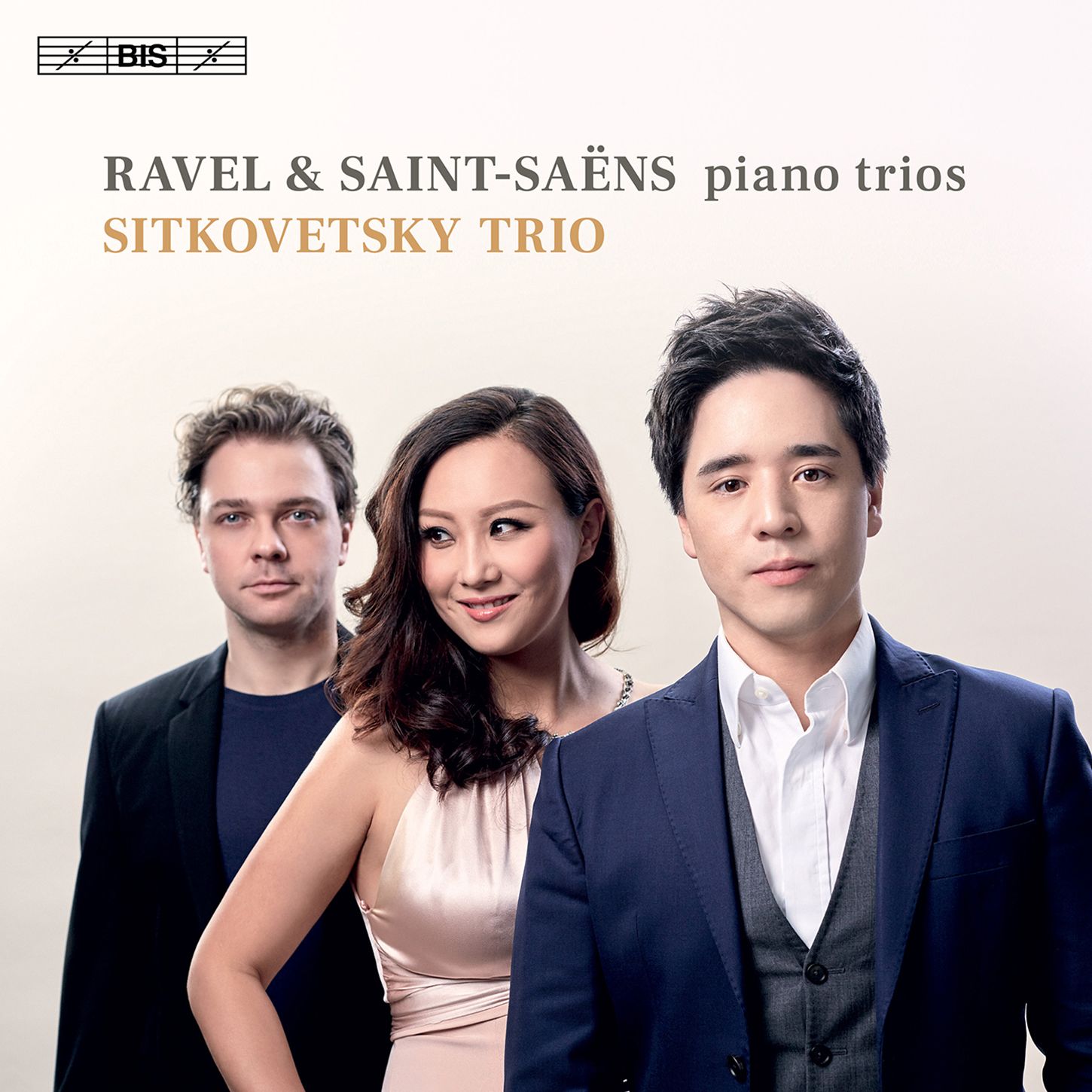Ravel and Saint-Saëns Piano Trios from the Sitkovetsky Trio
A glorious coupling here from the Sitkovetsky Trio: plus an animated cartoon!

A glorious coupling here from the Sitkovetsky Trio on BIS: Ravel is on record as saying that the only composer to solve the balance problems inherent in the piano trio (piano, violin and cello) was Saint-Saëns. Et voilà, as they say: Ravel's 1914 Piano Trio coupled with Saint-Saëns' Piano trio No. 2 in E minor, Op. 92 of 1892.
In fact, Ravel's Trio is said to be inspired by Saint-Saëns' First Trio (Op. 18). It follows on in Ravel's output from Daphnis et Chloé and the Valses nobles et sentimentales. This is music of rarefied beauty. Try the opening, with its Basque slant, and how the nine-minute movement expands into high beauty. There's a moment of a "lifting of the veil" right near the close that is simply magical :
The second movement is called "Pantoum" (a form in poetry); it is a scherzo in which Ravel creates a musical equivalent of the literary form of two themes in parallel by creating three themes, the first two forming stark contrast while the third actually derives from the first. The jagged collision of themes gives this movement a vibrant yet dislocated feel (and how lovely pianist Wu Qian's glissandos here!):
... or, if you prefer some entertainment, here's "Journey of the Pantoum," an utterly charming animation around this performance:
How great the contrast, then, for the Passcaille (Passacaglia), a dark movement that seems to slowly emerge from the earth itself. The performance is gloriously, unhurriedly, paced here before the finale, marked "Animé," unfolds with a wonderful sense of inevitability:
This is a beautiful, fine, modern recording. There have been several other excellent modern recordings of this piece, perhaps most notably from the Trio Wanderer and the Florestan Trio. But we're not going to hear either of those.
We're going, instead, back to a golden era, to a very special performance indeed, and the finest I, at least, have heard of the Ravel Piano Trio: pianist Vlado Perlemuter, violinist Jeanne Gautier and cellist André Levy caught in Paris on May 7, 1954 as part of a radio series produced for the ORTF. This very performance has also been released on a Tahra disc of Cortot - Beethoven First Piano Concerto - this trio, and Perlemuter playing Liszt Deux Légendes taken from 1939 Lumen 78s, Tahra TAH 610):
When it comes to the Saint-Saëns, the sense of Mozartian abundance of ideas is infectious. The Sitkovetsky Trio moves easily from Ravel's soundworld to Saint-Saëns', a world of eloquence and charm all cast in a five-movement arch form.
The first movement feels, uncharacteristically for this composer, somewhat unsettled. The second movement Allegretto has a lovely, catchy, irregular rhythm and the most amazing, scintillating, scampering section - kudos to Wu Qian again here:
Alexander Sitkovetsky shines in the central Andante con moto - listen to the purity of the ending:
The fourth movement highlights that lightness Saint-Saëns is so famous for; but the Sitkovetsky Trio finds a depth underpining the music that reminds us continually of Saint-Saêns' stature as a composer:
The finale finds the three members of the Sitkovetsky Trio caressing the opening theme beauitfully;
A fabulous release: an inspired coupling, beautifully delivered, and a confirmation ofteh stature of the Sitkovetsky Trio.
